Recently, a short video clip of the current 12th Tai Situ Rinpoche Pema Tönyö Nyinje surfaced within WeChat groups, causing quite a commotion. The minute-long footage features Tai Situ Rinpoche who is one of the four Regents of the Karma Kagyu lineage, fanning the fears surrounding Dorje Shugden, a Dharma Protector of the Gelug tradition.
It is extremely disappointing that Tai Situ Rinpoche, believed to be an emanation of the future Buddha Maitreya, would lobby opinions that bring no benefit to the unity of the Tibetan people. Someone who is labelled an emanation of the Buddha Maitreya should actually be filled with love, compassion and great tolerance, and should not fear any so-called ‘spirits’. Any emanation of Maitreya should not incite fear in the people who have trust in him, as well as his followers because in the end, if the so-called Maitreya is afraid of a spirit, then it must be your intention to create schism.
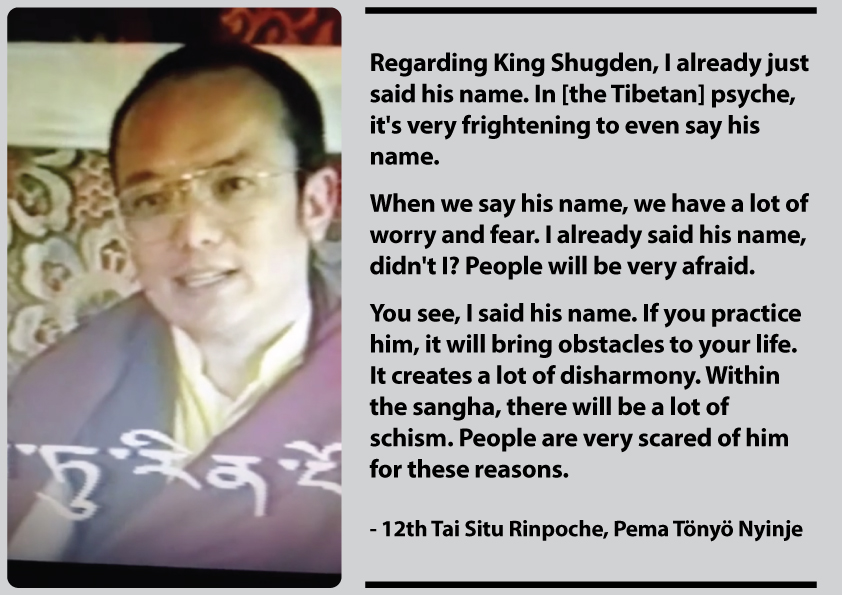
Translation of the WeChat video of the 12th Tai Situ Rinpoche, Pema Tönyö Nyinje commenting on Dorje Shugden.
On the contrary, Tai Situ Rinpoche’s speech contains not-too-subtle connotations that sow seeds of doubt and discord. Tibetan society does not need more ‘high’ lamas who criticize other lineages’ practices, deities and protectors. What they need are representatives of Buddhism who will create harmony, love, acceptance and tolerance; if someone like Tai Situ wants to start criticizing another lineage, practice, religion or spiritual path, then there will be many other paths which are not Karma Kagyu which will be considered wrong by him. Where do you draw the line? Maybe he should remain silent and respect all religious paths, would that not be better? It is not his place to judge another person’s spiritual path but to practice tolerance and perhaps remain silent.
Who is really causing schism?
One cannot help but question Tai Situ Rinpoche’s intentions for playing on and amplifying such unfounded fears. Why is Tai Situ Rinpoche taking sides in the Dorje Shugden rift? After all, it is unnecessary for him to be involved in such a sensitive and charged issue, especially when it does not directly concern his lineage. Tai Situ Rinpoche should set a good example and not interfere in the philosophies, practices, deities and spiritual path of another sect of Buddhism. His opinion will not hold water nor will it be respected but will be the cause of much more schism and dissension amongst various sects.
Until the implementation of the undemocratic ban in 1996, Dorje Shugden was widely practiced by great masters of both the Sakya and Gelug traditions. In fact, Dorje Shugden was first practiced, enshrined and written about in the Sakya tradition – a few great Sakya throne holders composed lengthy prayers and liturgies to Dorje Shugden for meditations and pujas, and within the Sakya tradition, Dorje Shugden is known as ‘Dorje Shugden tanag’ (Dorje Shugden depicted riding on a black horse). His was a highly recommended practice by some of the Sakya throne holders and in the main temple of Sakya in Tibet, there are shrines dedicated to him. Historically, it was the 30th Sakya throne holder Sonam Rinchen who first enthroned Dorje Shugden as an enlightened protector who, together with Dorje Setrap and Tsiu Marpo, formed as one of the groups of protectors of the Sakya lineage known as The Three Kings (Gyalpo Sum). It was from the Sakyas that great Gelugpa high-ranking masters, luminaries, yogis and scholars received this practice and up until today, many Gelugpa meditational practices were actually imported from the Sakya lineage. Hence, having originated amongst the Sakyas, Dorje Shugden became a mainstream practice in almost all Gelug monasteries in and out of Tibet for the past 400 years.
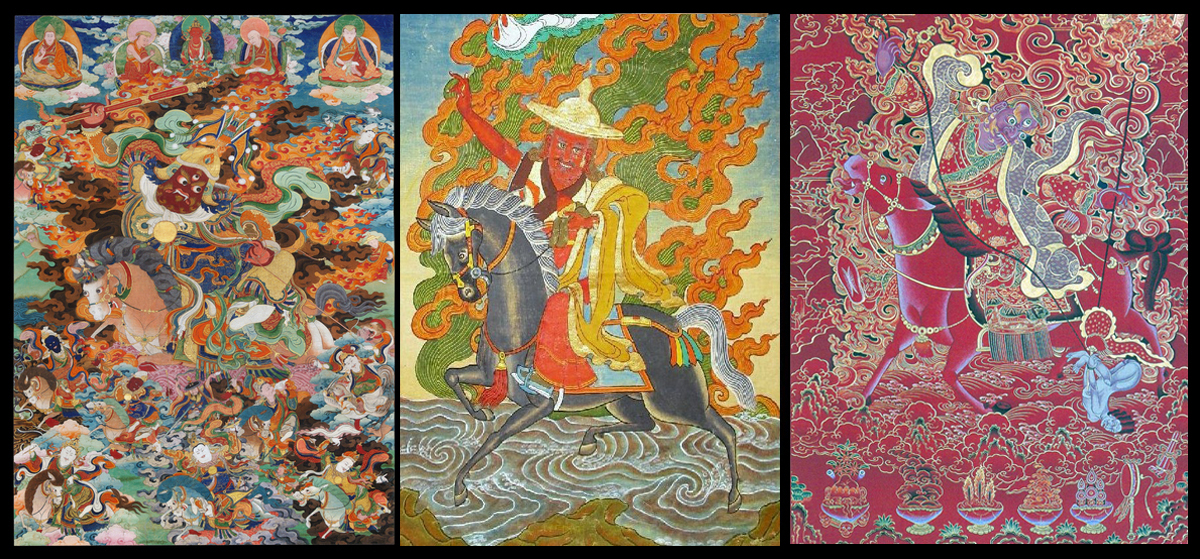
The Sakya Gyalpo Sum trio of protectors include Setrap, Dorje Shugden and Tsiu Marpo.
Therefore, when historical evidence shows the extensive, multi-tradition and interminable practice of this enlightened Dharma Protector prior to the 1996 Dorje Shugden ban, Tai Situ Rinpoche saying that Dorje Shugden “creates a lot of disharmony” and “within the Sangha there will be a lot of schism” is not only completely untrue but ironically is itself the cause of disharmony, distrust, animosity and schism. Tai Situ Rinpoche himself has created so much controversy, schism, division and fighting within his own lineage, and that he cannot blame on Dorje Shugden since he is so frightfully fearful of even mentioning his name. It is ironic he says Dorje Shugden creates division and schism, when he is doing a fine job of doing so all on his own.
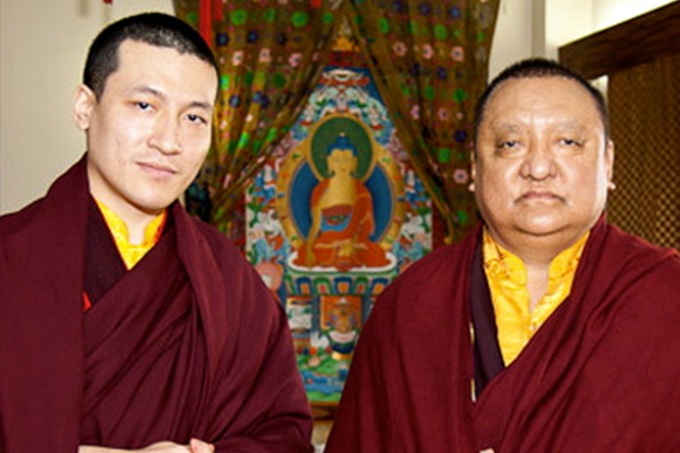
The Tibetan government-in-exile, known as the Central Tibetan Administration (CTA) has been implicated in the controversy surrounding the recognition of the 17th Karmapa. Shamarpa Rinpoche should be the traditional lama to recognize and enthrone the 17th Karmapa. Due to the CTA’s interference, Shamarpa’s candidate received many threats and problems during the recognition. This picture shows His Eminence Shamar Rinpoche (right) with the 17th Karmapa Trinley Thaye Dorje (left).
His statements also demean all the great masters of the Gelug tradition (and the Sakya masters preceding them) who had tremendous faith in Dorje Shugden and engaged in his practice. Is Tai Situ Rinpoche implying that all the great Sakya and Gelug masters were wrong? That they lied to and misled their followers by encouraging them to rely on Dorje Shugden? That they were bad practitioners with no wisdom and foresight? That Tai Situ himself is higher and has better insight than all of them? How can Tai Situ Rinpoche judge lamas who are much more superior than himself? As sad as it seems, many within Tibetan Buddhism (both Tibetans and foreigners) find Tai Situ Rinpoche’s actions and speech more akin to a politician’s for self-gain than that of a so-called high lama. His immediate senior, His Eminence Shamar Rinpoche, is considered much more spiritual, direct and honest, and it would not come as a shock to know that Tai Situ has created great schism, talk and divisiveness against Shamar Rinpoche. For that, Tai Situpa was in fact banned by the Indian government from entering India for five years. That itself should say a lot. Shouldn’t a lama of Tai Situ Rinpoche’s standing be promoting religious tolerance, unity and peace instead?
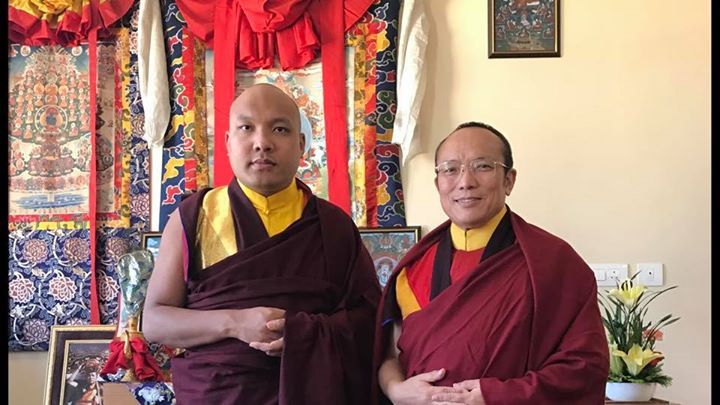
The Tibetan government-in-exile, known as the Central Tibetan Administration (CTA) has been implicated in the controversy surrounding the recognition of the 17th Karmapa. This picture shows Tai Situ Rinpoche (right) with the 17th Karmapa Ogyen Trinley Dorje (left). With much violence, in-fighting and split among the Karma Kagyus, this very political Tai Situ Rinpoche did his Karmapa candidate’s enthronement. Many within Karma Kagyu sect do not accept his choice of candidate. The Dalai Lama was asked to withdraw his support for this candidate but said he could not do so because he has already signed his name to it, which means that he was endorsing this candidate for perhaps political reasons. The reason why Tai Situ broke with tradition and went to His Holiness the Dalai Lama to recognize his candidate is because he wanted his candidate to win so that he, Tai Situpa, could have access and control of the Karmapa’s estate accumulated over 16 generations. He therefore went to the Dalai Lama to gain an endorsement for his candidate Ogyen Trinley, thereby riding on the Dalai Lama’s fame to override Shamarpa who is the traditional person who is supposed to recognize the Karmapa.
Perhaps this is because Tai Situ Rinpoche is no stranger to divisiveness – he is a central figure in the controversy surrounding the recognition of the 17th Karmapa candidate. He has also instigated and promoted violence within the Karma Kagyu sect by encouraging his supporters to ransack Rumtek Monastery. Tai Situ Rinpoche’s encouragement was fueled by jealousy and unhappiness with His Eminence Shamar Rinpoche enthroning his Karmapa candidate Thaye Dorje in Rumtek Monastery itself. Within this video that was captured, you can see the extreme violence and vandalism by Tai Situpa’s supporters in Rumtek Monastery while Shamarpa and his Karmapa candidate were inside. Take note that Rumtek Monastery is the headquarters of the Karmapa in India, where Tai Situpa and Shamarpa had both grown up. Tai Situ Rinpoche overstepped his boundaries when he recognized Ogyen Trinley Dorje as the 17th Karmapa, a responsibility traditionally reserved for Shamar Rinpoche, the second highest ranking Karma Kagyu lama.
Tai Situ Rinpoche also broke tradition when, in a bid to force his candidate onto the Karma Kagyu throne, he involved His Holiness the 14th Dalai Lama and the Central Tibetan Administration (CTA; Tibetan leadership in Dharamsala, North India) in the recognition of the 17th Karmapa. Everyone knows the reason why Tai Situ broke with tradition and went to His Holiness the Dalai Lama to recognize his candidate – he wanted his candidate to win so that he, Tai Situpa, could have access and control of the Karmapa’s estate accumulated over 16 generations. He therefore went to the Dalai Lama to gain an endorsement for his candidate Ogyen Trinley, thereby riding on the Dalai Lama’s fame to override Shamarpa who is the traditional person who is supposed to recognize the Karmapa.
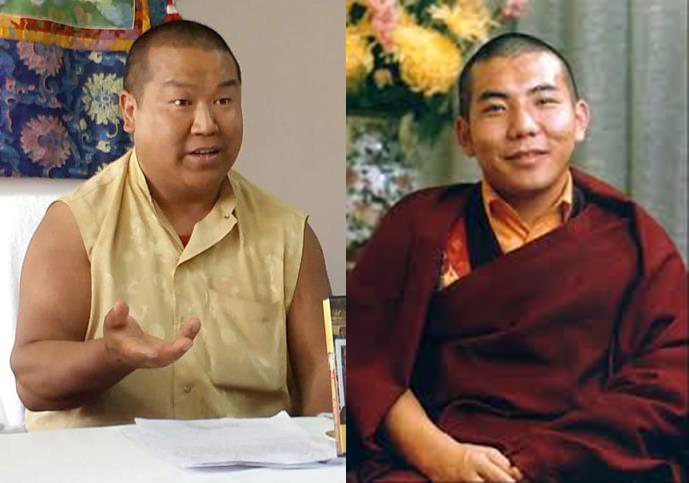
The Tibetan government-in-exile, known as the Central Tibetan Administration (CTA) has been implicated in the controversy surrounding the recognition of the 17th Karmapa. This picture shows His Eminence Jamgon Kongtrul Rinpoche (right) with his candidate of the 17th Karmapa Dawa Sangpo Dorje (left). So within the Karma Kagyu school of Buddhism, due to the politics and greed, there are three candidates to Karmapa. It is a very sad situation indeed, with so much in-fighting and schism within the Karma Kagyus. Tai Situ Rinpoche would like to say Dorje Shugden creates divisions and schisms, but it seems without Dorje Shugden, Tai Situ is creating a lot of divisions on his own.
To further inflame the issue, Tai Situ Rinpoche refused to submit for verification the evidence he claimed substantiated his choice of candidate. In fact, the line of Karmapa incarnations are known for finding their own next incarnations – before they pass away, they leave a written letter stating the location their next incarnation, as well as the name of their parents. This letter is sealed until the appropriate time when the four Regents open it together and embark on finding the Karmapa incarnation. The four regents are Shamar Rinpoche, Tai Situ Rinpoche, Jamgon Kongtrul Rinpoche and Goshir Gyaltsab Rinpoche.
Tai Situ claimed he had this important recognition letter from the 16thKarmapa giving the whereabouts of the 17thKarmapa but he would not show it to anyone nor share it with the other regents. Shamarpa also claimed to have the letter and said that the letter held by Tai Situ is a forgery. The division continues from thereon without end; until today, the Karma Kagyu school is split into two, fighting, lambasting, criticizing, finger-pointing and badmouthing each other to such a point whereby one of the Karmapa candidates, Ogyen Trinley, spoke up about it. For someone who is as colorful as Tai Situ Rinpoche, who has created so much division, fighting and anger within his own lineage with his alleged deceptions, do you think he has the right to criticize another sect’s choice of protectors? Maybe he should solve his own problems before he sticks his nose into other issues that he knows nothing about. With his refusal to show his letter allegedly in the handwriting of the 16th Karmapa, his actions have since caused a deep split within the Karma Kagyu school which shows no sign of healing.
Inflammatory and untrue statements
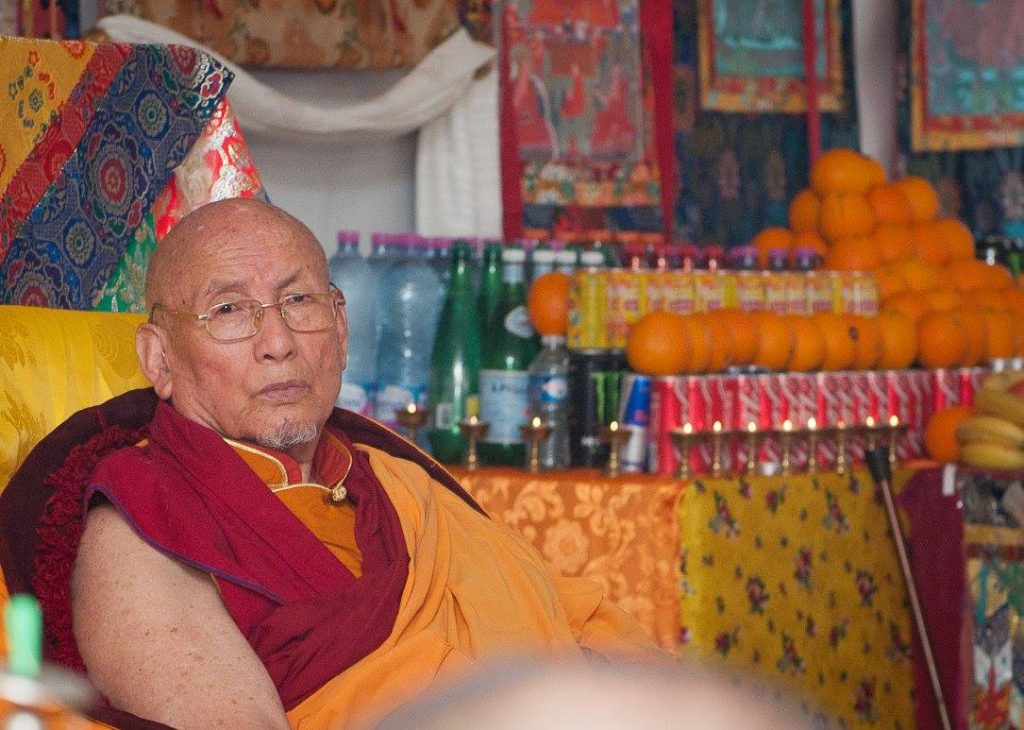
This is the head of the Gelugpa order, His Holiness the 101st Gaden Tripa Jetsun Lungrik Namgyal. During his tenure, which was extremely successful, he was the supreme throne holder of the Gelugpa school. Currently 92 years old, His Holiness resides in France where he remains a very strong practitioner of Dorje Shugden, always encouraging people to rely on the enlightened Protector. When the highest-ranking lama within the Gelug school of Buddhism tells you Dorje Shugden is beneficial and Manjushri in nature, maybe a much lower-ranking lama such as Tai Situpa should take heed of his senior. The 92-year-old Gaden Tripa is one of the greatest scholars of Buddhism on this planet and the head of the spiritual tradition of Gelugpa. He has lived a stainless, faultless life, remains very healthy and strong, and continues to advocate the practice of Dorje Shugden which he has received from his own root guru. Compare this to the politically-inclined Tai Situ Rinpoche who sends his followers to storm his own monastery, and throw rocks and bottles, and break its windows to disturb an important ceremony. You think which one you should listen to.
The divided opinion on the divinity of Dorje Shugden, which has gone on for decades, is still a highly charged topic today. Regardless of one’s opinion, what is crystal clear is that Dorje Shugden has not been conclusively proven to be a malevolent spirit. Contrary to this and in fact, there is vast evidence of Dorje Shugden’s enlightened nature.
In the video, Tai Situ Rinpoche clearly says that,
If you practice Shugden, it will bring obstacles to your life.
This alludes to the wrong views held by the anti-Shugden camp that a person’s life is shortened if he propitiates Dorje Shugden. Yet, it has been established that many lamas who are or were steadfast Dorje Shugden practitioners have long lifespans with some living well into their eighties and nineties. These include:
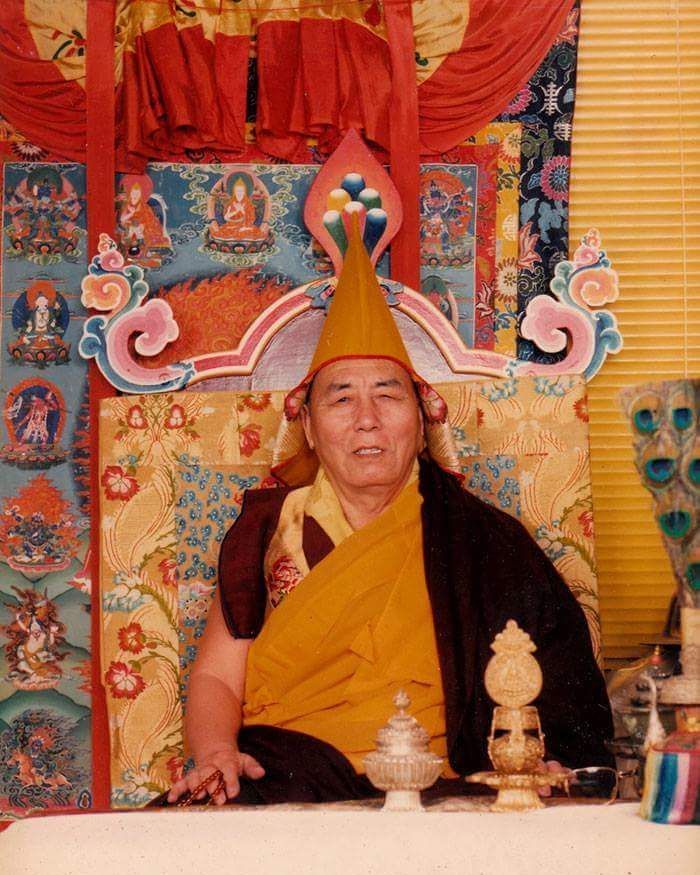
His Eminence Sogpu Rinpoche is considered to be an emanation of Gyenze, the “increasing” form of Dorje Shugden. He was born in 1908 in Hanchen Hosguu of Ordos in Inner Mongolia, and was enthroned on the Hutugtu throne at a young age. He entered clear light and left his earthly body in 2009 at the age of 101 years old.
- H.H. Kyabje Trijang Rinpoche, who lived until the age of 81 (1901-1981)
- H.H. Kyabje Zong Rinpoche, who lived until the age of 79 (1905-1984)
- H.E. Sogpu Rinpoche (Bundasheri Tulku Guru Deva), who lived until the age of 101 (1908 – 2009)
- H.E. Kyabje Lati Rinpoche, who lived until the age of 88 (1922 – 2010)
- H.E. Kensur Lobsang Tharchin Rinpoche, who lived until the age of 83 (1921 – 2004)
- H.E. Kensur Jampa Yeshe Rinpoche, who lived until the age of 82 (1929 – 2011)
- H.H. 101st Trisur Rinpoche Jetsun Lungrik Namgyal, who is still going strong at 91 years old (1927 – present)
- H.H. the 14th Dalai Lama, who is still very much active and healthy at 83 years old (1935 – present)
- Ven. Geshe Kelsang Gyatso, who is already 87 years old (1931 – present)
- H.E. Drubwang Gangchen Rinpoche, who is at present 77 years old (1941 – present)
- H.E. Kensur Rinpoche Lobsang Phende, who is also currently 77 years old (1941 – present)
Is a malevolent spirit more powerful than the Buddhas?
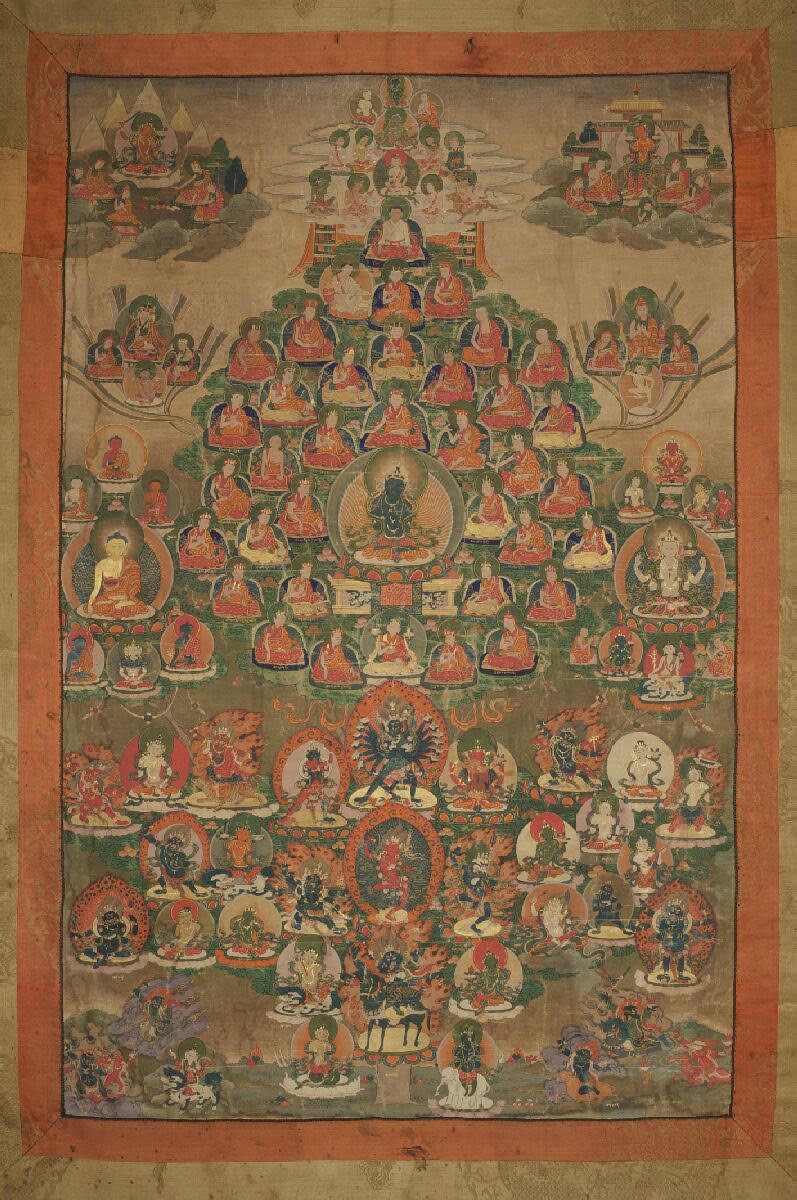
Early Karma Kagyu Refuge Tree showing the Buddhas, enlightened protectors and lineage masters. Click to enlarge.
As one of the oldest tulku lineages of the Karma Kagyu tradition, Tai Situ Rinpoche should possess the knowledge to understand that there is no basis to fear any spirit, malevolent or otherwise, if one has taken the Refuge Vows and even more so if one has taken the Sangha Vows. The Buddhist teachings are clear that no ghost or spirit can harm a monk or nun unless they themselves have broken their vows.
By encouraging fear of malevolent spirits, Tai Situ Rinpoche makes the supposition that the Three Jewels (Buddha, Dharma and Sangha) do not have the power to bring people under their protection. To make matters worse, when most lay people would turn to their lama or guru for spiritual assistance, including for protection against spirits and black magic, Tai Situ Rinpoche’s seeming lack of faith in the power of vows and refuge is akin to him saying that he is powerless to assist or protect his followers from malevolent spirits. This is illogical — can you imagine going to the Dalai Lama only to have His Holiness tell you that not only is he powerless to help, but he fears the spirit? Can you imagine His Holiness encouraging you to be afraid of a malevolent spirit and advising you to refrain from saying its name just in case you attract its attention?
In fact, high Tibetan lamas are renowned for their ability to subdue malevolent spirits. Given his repute, it should not be beyond Tai Situ Rinpoche’s ability to do so as well. As such, instead of playing up people’s paranoia with continuous talk, if Dorje Shugden were really that harmful, why not be practical and apply the proven solution i.e. subjugation?
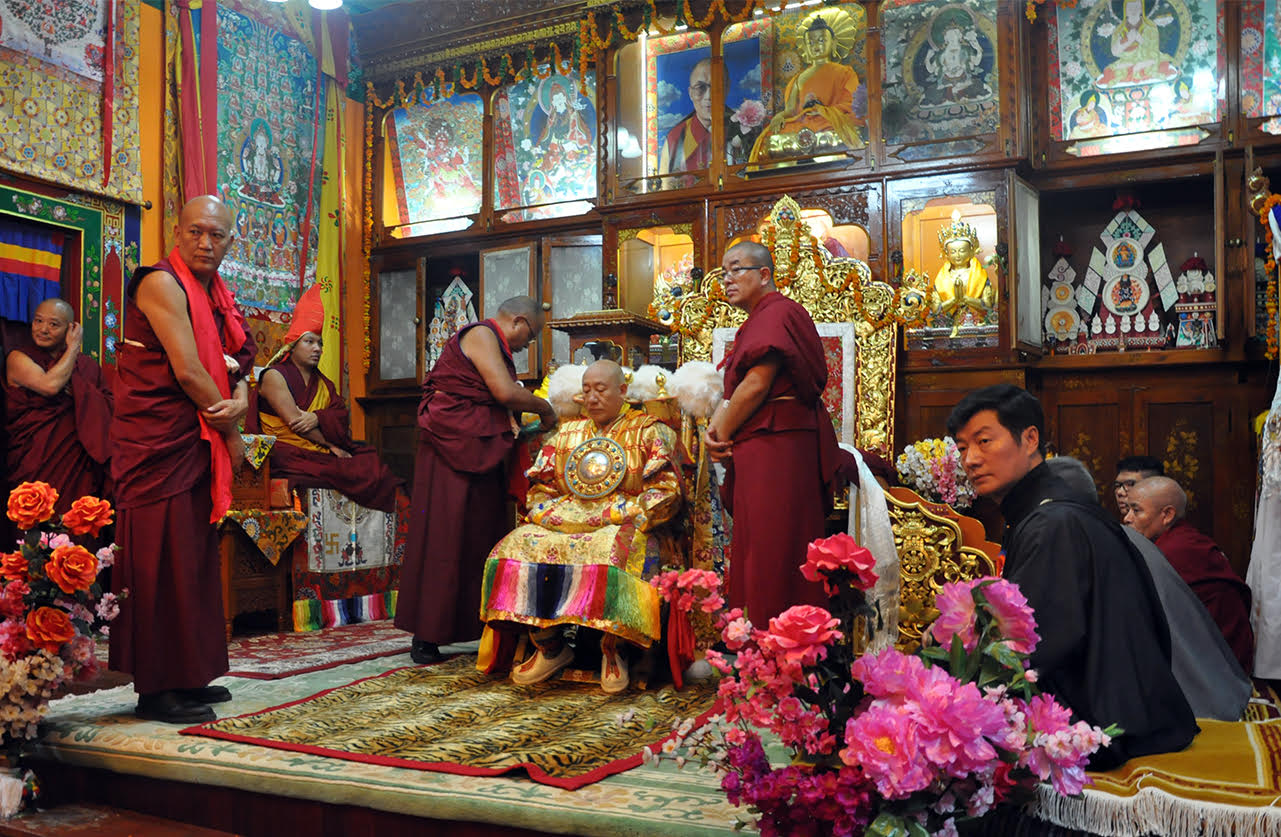
Nechung was once an evil worldly spirit that did his best to destroy the advent of Buddhism in Tibet until he was subdued by Guru Rinpoche or Padmasambhava. In fact, Nechung is said to have originally come from Persia. So here you have a perfidious Persian spirit subdued by an Indian saint, turned into a Protector force within Tibet. Who is the real spirit? Today, he is the State Oracle of Tibet. In this picture, the 17th Karmapa Ogyen Trinley Dorje, Sikyong Dr Lobsang Sangay and representatives of the CTA attend the invocation of the Nechung Oracle at Nechung Monastery on 18th July 2016. They are all waiting for the Nechung spirit to enter his human oracle and give predictions of the future, many of which have been proven wrong.
Spirits and ghosts are beings who are experiencing great pain and suffering. So, instead of encouraging his followers to fear Dorje Shugden who is supposedly a malevolent spirit, would it not behoove Tai Situ Rinpoche to subdue Dorje Shugden and send his consciousness to a pure land? Or alternatively, to subdue Dorje Shugden to serve as a Dharma Protector as in the case of Nechung, the State Oracle of Tibet? Lamas like Tai Situ Rinpoche are supposed to help people overcome spirit problems, as well as help spirits be released from their suffering. So how does Tai Situ Rinpoche subdue ghosts or spirits if he is afraid of them?
No demon or evil spirit can be more powerful than a Buddha but by Tai Situ Rinpoche labelling Dorje Shugden a spirit and then encouraging his followers to fear Dorje Shugden, he is implying that Dorje Shugden is stronger than Buddha Shakyamuni, Yamantaka, Manjushri or Palden Lhamo. What kind of message is he spreading to his students and followers? Why is he spreading information that is contradictory to the basic tenets of Buddhism?
There is only one possible explanation as to why Dorje Shugden cannot be subdued, which is that Dorje Shugden is himself a Buddha, an enlightened being emanating as a worldly protector. The only beings that cannot be subdued by Buddhas, are Buddhas themselves.
What is Tai Situ Rinpoche really saying?
It is a shame that Tai Situ Rinpoche is abusing his position as one of the leaders of the Karma Kagyu school to spread misleading, unsubstantiated fears and distorted information to the tens of thousands of adherents of his lineage, and to worsen an already-wide rift amongst Tibetan society. In fact, Tai Situ is very well-known to follow politics of the majority in order to have access to financial gain. By him sticking his nose and interfering with Gelugpa and Sakya business, and criticizing a Protector that has nothing to do with them, he is trying to nuzzle up to His Holiness the Dalai Lama and the Tibetan government-in-exile, and to be seen to be on the ‘right’ side. When he is seen to be on the ‘right’ side and he is supported by the Dalai Lama, it will mean more fame for him which will of course translate into more donations. This could be his only motive for speaking up on a subject that he knows nothing about. By speaking against Dorje Shugden, he is automatically criticizing the great Sakya and Gelug lamas who are much more senior than him, and much greater in knowledge than himself.
Instead of accepting Tai Situ Rinpoche’s words wholesale, discerning viewers should analyze the contents of his speech, examine them logically against the Buddha’s teachings, and then speak up to correct the wrong views that this video may have created. Tai Situ Rinpoche should really be held accountable for the pain, suffering and discrimination that he is encouraging through this short one-minute video – what is his motive for making these comments and what is he trying to achieve, personal, political or spiritual gain?
MORE NEWS LIKE THIS